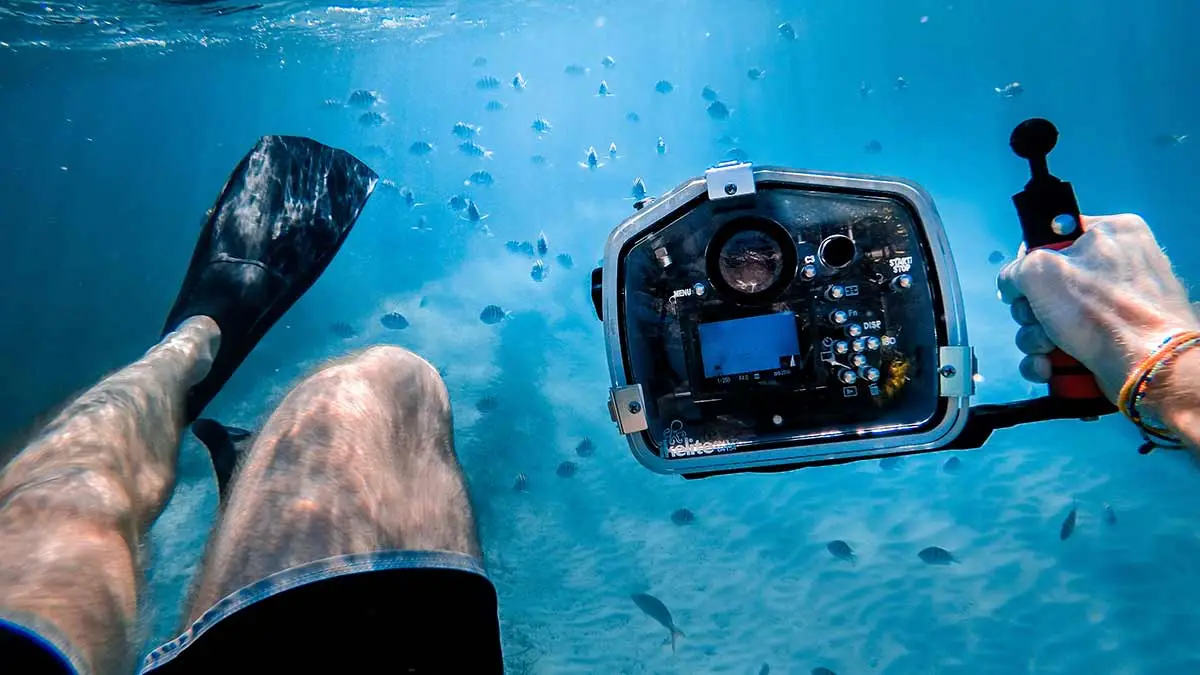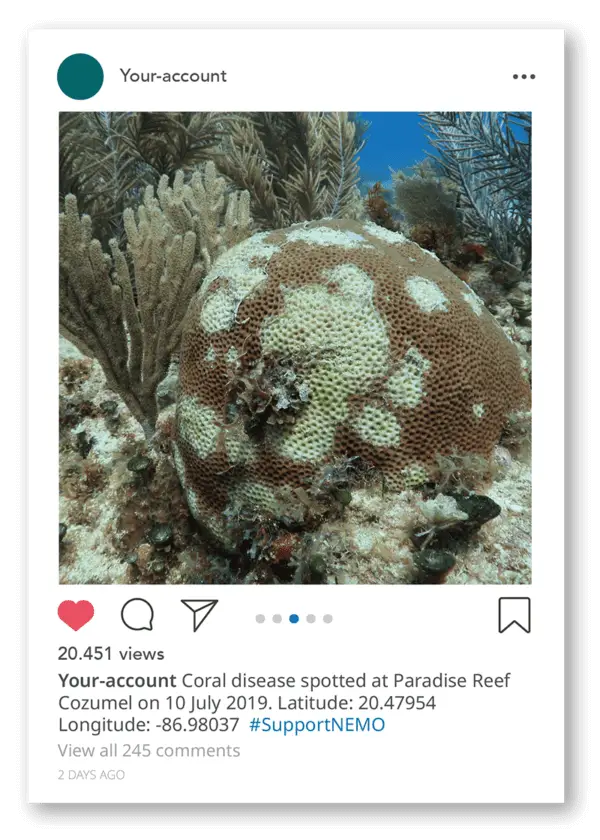A Mysterious Coral Disease known as “Síndrome Blanco” is Ravaging the Mesoamerican Reef. Here’s How You Can Help.
Corals are plants, right? Or… maybe rocks?
Guess again.
Corals are actually animals! In fact, a single coral formation can be made up of THOUSANDS of tiny little animals called polyps, which are related to jellyfish. Together, polyps create beautiful corals of all shapes and sizes. Some build stony coral reefs, while others form soft corals that resemble bushes, feathers, and trees.
But corals are also extremely sensitive creatures. Something as simple as a change in water temperature or poor water quality can lead to their demise. The rise in climate change and other human impacts is putting coral reefs around the world in jeopardy. Scientists predict that over 90% of all reefs could be gone by 2050 unless we reduce these impacts.
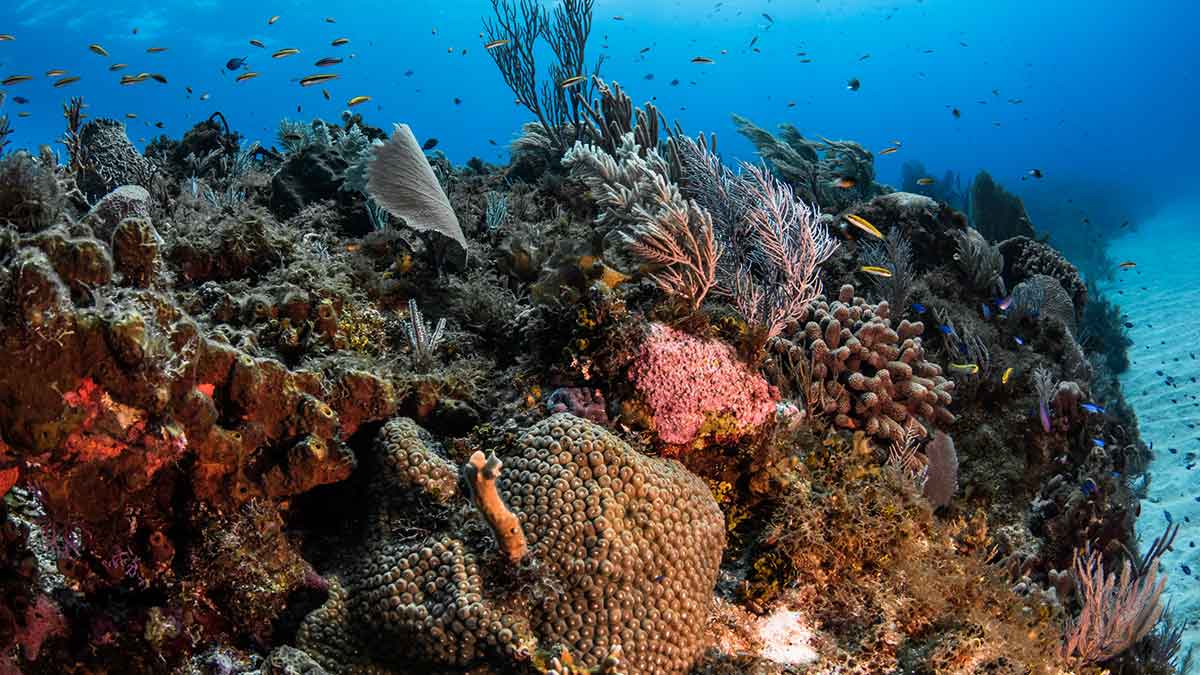
A Reef in Danger
You’ve probably seen headlines warning of the decline of the Great Barrier Reef, but this iconic natural wonder is not the only reef at risk. On the opposite side of the world lies another important reef that is also in peril.
Spanning 600 miles from Mexico all the way to Honduras, the Mesoamerican Reef is the world’s second largest reef system. OVER HALF of the reef is in poor or critical condition due to careless tourism, pollution, unsustainable fishing, and climate change. To make matters worse, scientists recently discovered a new and urgent threat that is attacking the reef. A coral disease outbreak, known as “Síndrome Blanco” (White Syndrome), is killing over 20 of the coral species found on the reef. Scientists believe this disease is the same as the stony coral tissue loss disease that has been ravaging Florida’s reefs for the past five years.
On top of this, holding animals can come at a cost to you as well. Some animals will become aggressive, expel lethal toxins, or sting you if touched. This natural response helps them fend away in predators – which in this case is YOU!
When taking photos of marine wildlife, abide by the rule of snap, don’t touch. Keep your hands to yourself to keep everyone safe.
What is the White Syndrome Coral Disease?
The White Syndrome disease is a swift killer and is spreading rapidly across the Mesoamerican Reef. The disease destroys the soft tissues of corals, resulting in lesions that look like white rings or patches. In just a matter of weeks, it can transform vibrant coral structures that took HUNDREDS of years to grow into lifeless skeletons covered with algae.
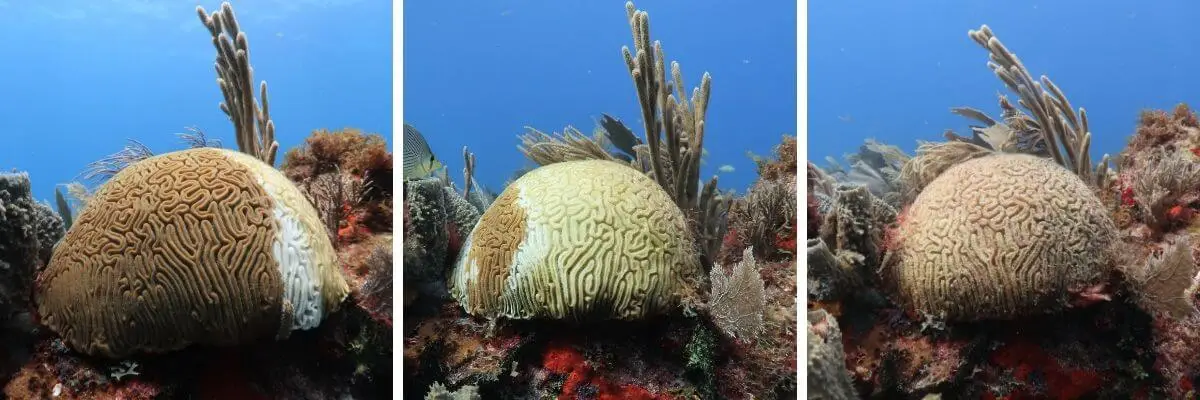
While the cause of the outbreak is still unknown, scientists believe that it may be due to poor water quality, which makes corals more susceptible to disease. These water quality issues are largely the result of human activities such as wastewater pollution and mangrove destruction. It may also be related to the heaps of Sargassum seaweed that wash up and decay on Mexico’s coasts.
Brain, pillar, star, and starlet corals are amongst the types of corals that are most susceptible to the disease. Approximately 30% of affected coral species have already died since the disease was discovered in June 2018. To put things into perspective, the amount of coral lost in the first six months of the outbreak, is equivalent to the amount lost in the previous 40 years.
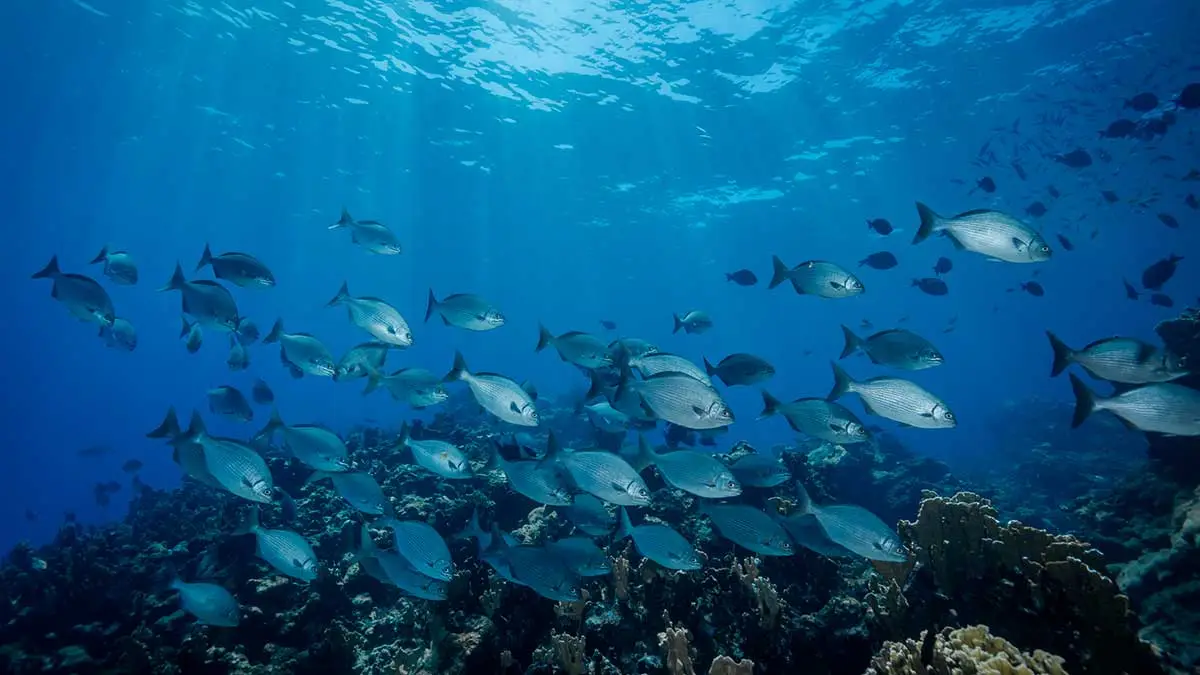
Greater Consequences
Coral reefs are the most biodiverse marine ecosystem. Though they cover less than 1% of the ocean floor, they are home to more than a quarter of all marine life.
If this disease continues to wreak havoc across the Mesoamerican Reef, there will be a ripple effect of consequences for marine life and communities. When coral health declines it can throw off the delicate balance of the entire ecosystem and cause fish populations to dwindle. As the reef becomes barren, local people that rely on the reef will need to find other sources of food and income. On top of this, coastal communities will be left exposed to the damaging impacts of waves and storms. And without calcium rich corals you can also bid farewell to white sandy beaches!
Needless to say, the loss of a reef system as expansive as the Mesoamerican Reef would be devastating at a time when coral reefs across the globe are struggling to survive.
Help Fight the Disease!
Time is ticking to stop this disease before it destroys the Mesoamerican Reef. Here are a few ways that you can help!
Become a NEMO and monitor the disease
Right now, scientists need more data to understand what’s happening to the reef and prevent the disease from spreading further. By participating in our NEMO program, you can collect data that will help scientists monitor the disease and protect the reef.
If you spot diseased coral when you’re out on the reef, take a photo of it and share it to Instagram using #SupportNEMO. In your caption, also include the location (dive site or GPS coordinates) and date that you took the photo.
To spot coral that is diseased, look for any of the following characteristics:
- White-colored band across the coral
- White spots or lesions that are spreading radially
- Colorful tissue is peeled off and bare white skeleton is exposed
Your photos will help our NEMO Reef Response Team to better understand the disease and track which coral is infected. Having this
knowledge will enable the team to take action to prevent the disease from spreading, alleviate infections, and begin restoration efforts. In addition to supporting reef monitoring, your photos will also help us raise awareness about the disease so that we can build a powerful movement for responsible tourism and prevent further harm to the reef! For more details about how to monitor the reef, visit SupportNEMO.com.
Other ways to help
In addition to monitoring the disease, you can also do the following to relieve stress on the reef and prevent the spread of coral disease:
- Use reef-safe sunscreens that don’t contain harmful chemicals such as oxybenzone and octinoxate that are toxic the reef. More information on how sunscreen affects coral reefs and which chemicals to avoid is available here.
- Don’t touch corals or other marine life. Maintaining proper buoyancy is an important skill to keep your fins or equipment from hitting the reef or seafloor.
- Disinfect your dive and snorkel gear between excursions by removing debris and sanitizing it with a 5-10% bleach solution. For sensitive equipment, use fresh water with antibacterial dish soap instead. Detailed instructions on how to safely decontaminate different types of gear are outlined here.
- Don’t litter and reduce plastic use to reduce the amount of debris that is contaminating the reef.
- Choose responsible dive operators, hotels, and other businesses that practice proper wastewater treatment and use environmentally friendly cleaning products and fertilizers.
Together we can transform reef conservation and create a brighter future for the Mesoamerican Reef! So what are you waiting for? Go to SupportNEMO.com to learn more or follow @SupportNEMO on Instagram to join the movement to save the reef!
Header Photo: Lorenzo Alvarez Filip / UNAM – BARCO LAB
Free Climate-Friendly Travel Tips List


 Written By:
Written By: 